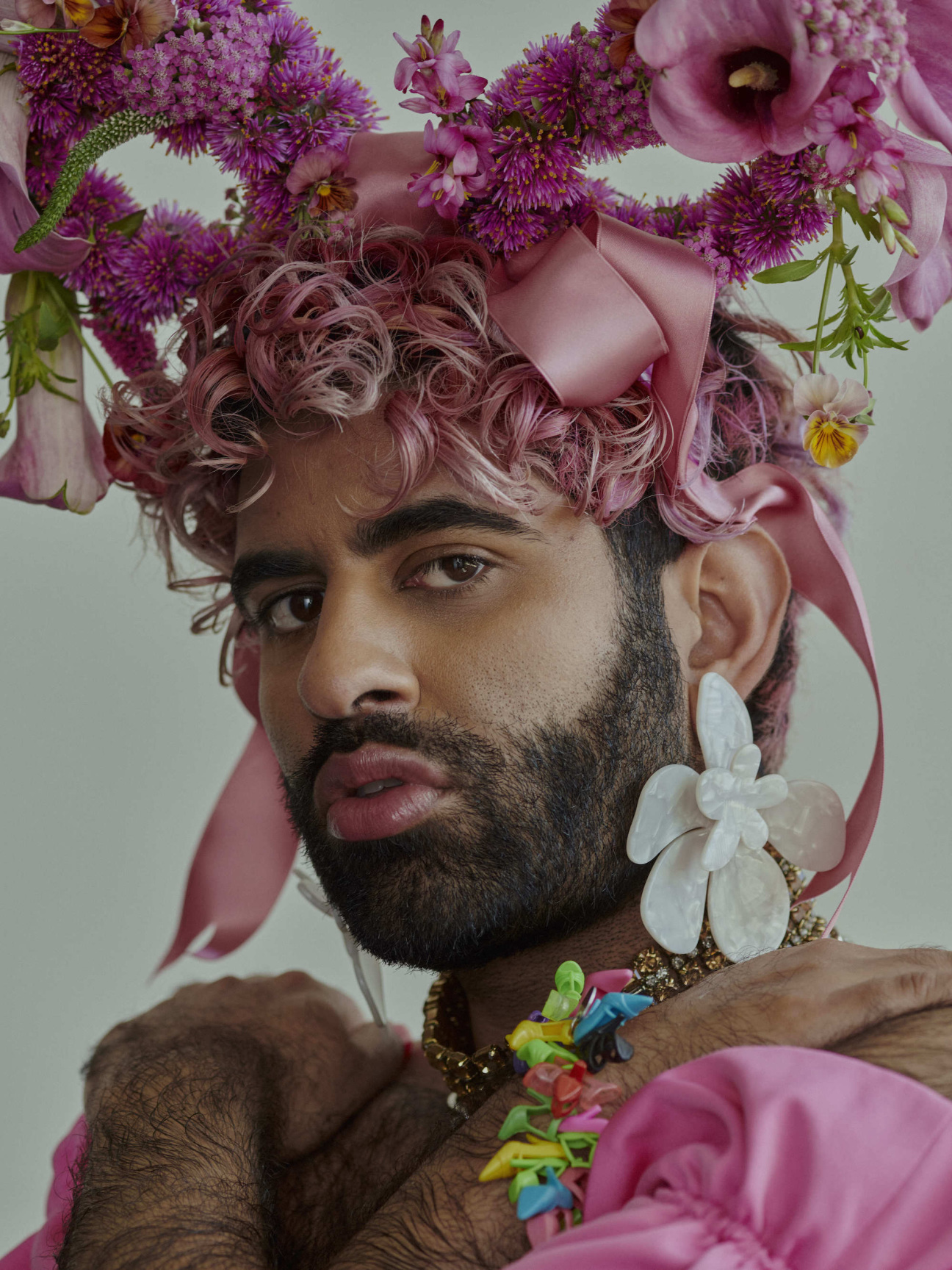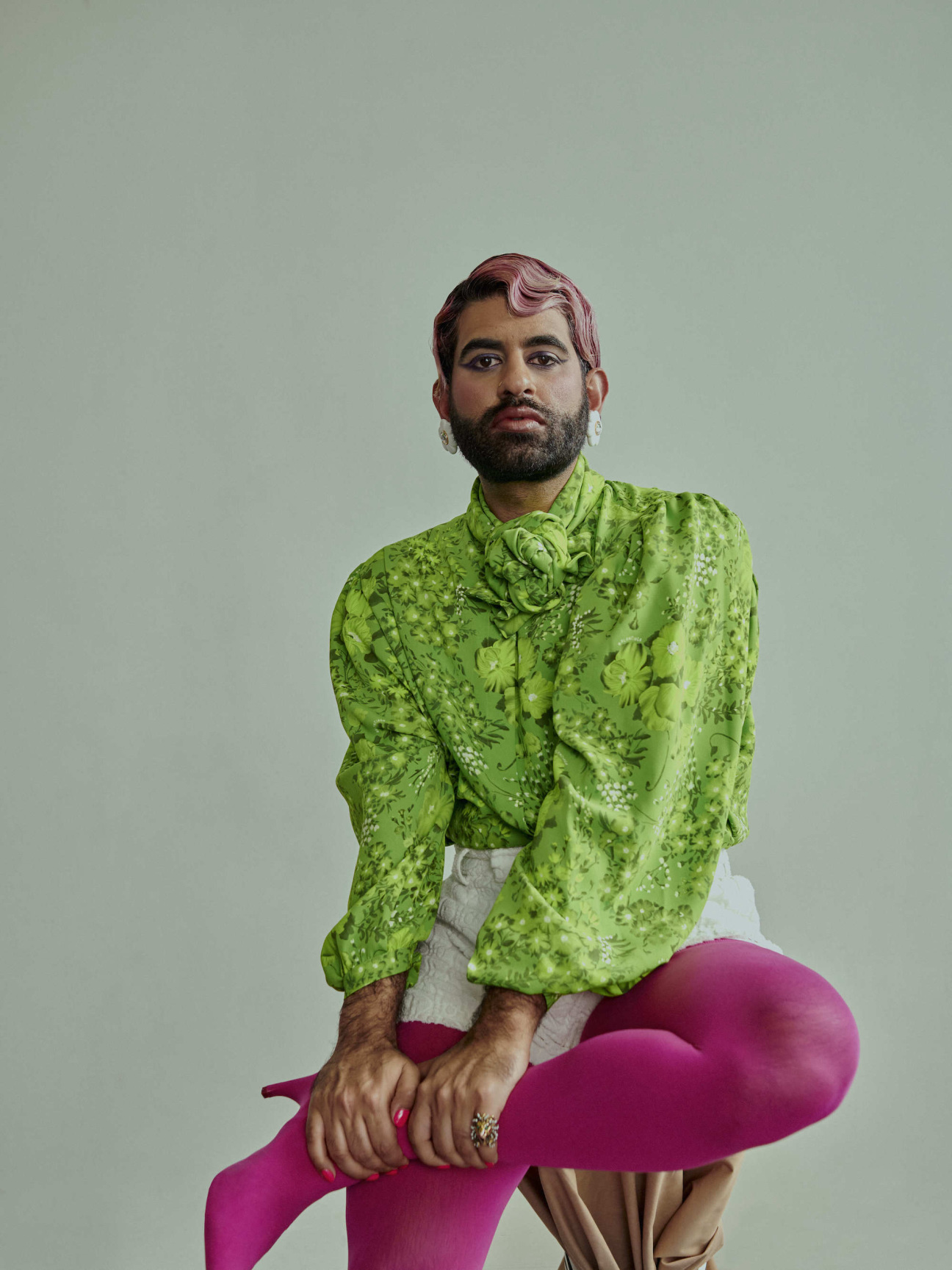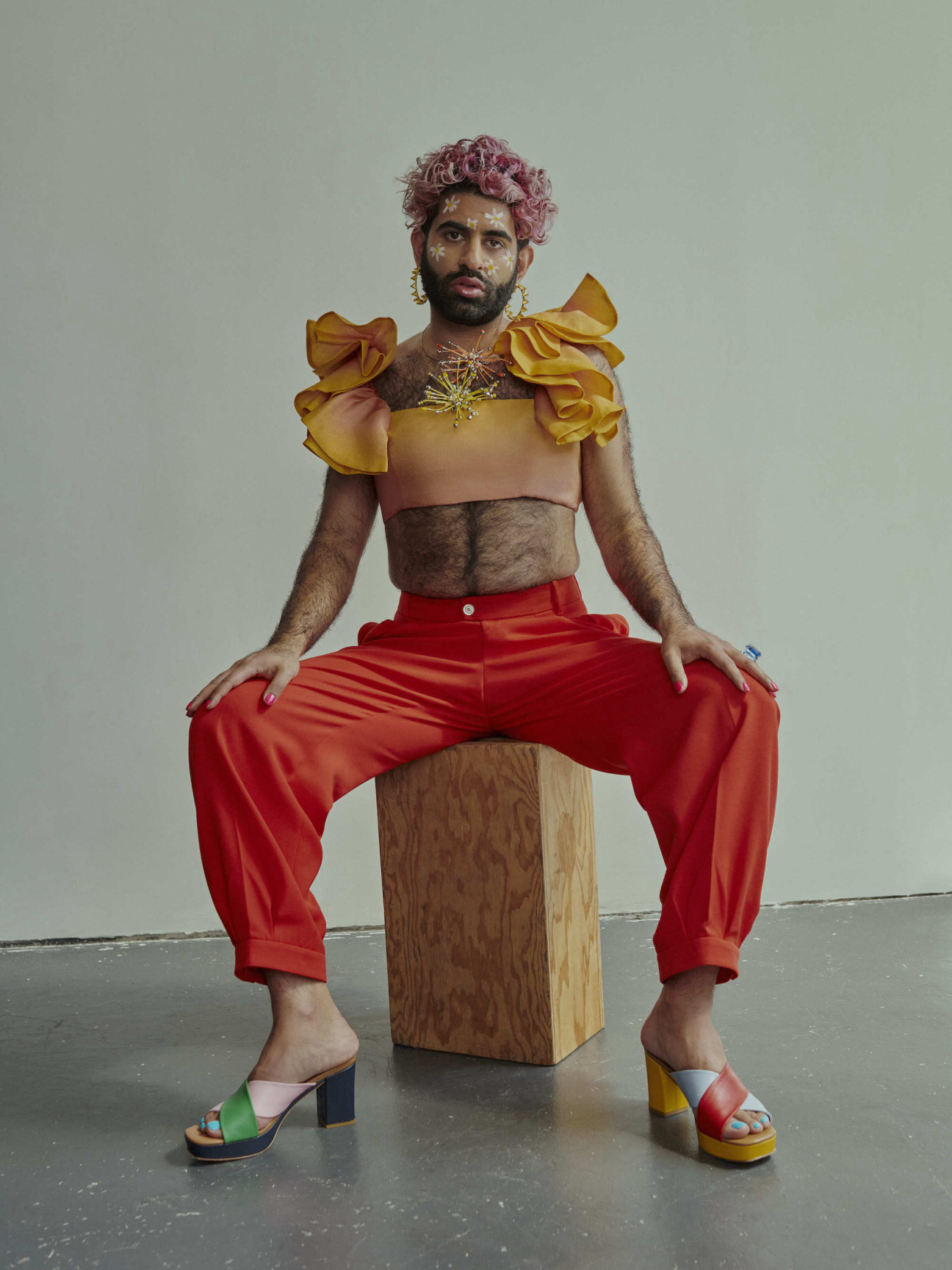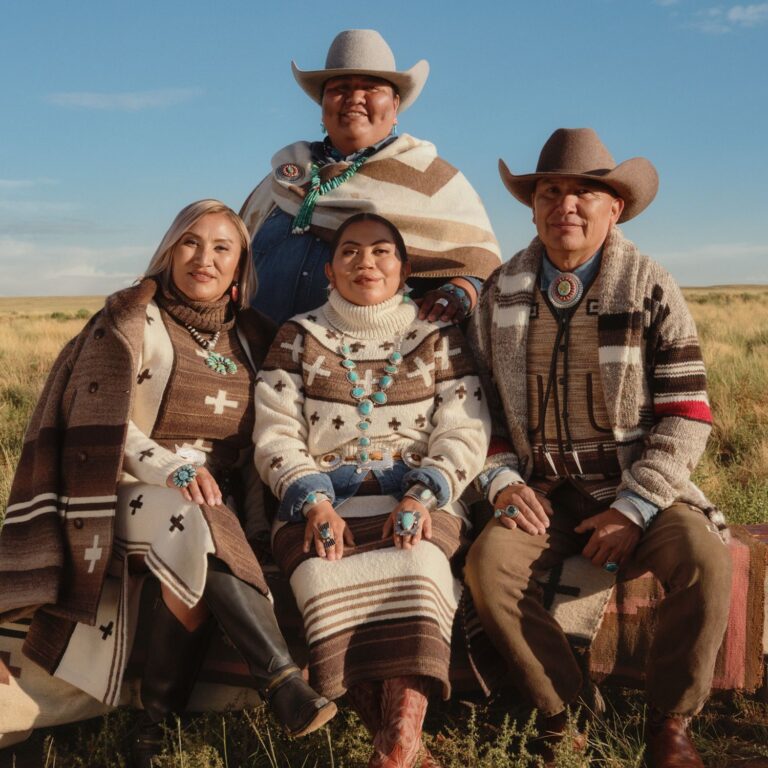The designs of our cities, housing, and community spaces often seem so permanent and inherent to our society’s DNA that it can be difficult to imagine a different world. But all design must first be imagined before it’s constructed. This is a reality that writer, artist, and performer Alok Vaid-Menon is deeply familiar with.
“Design is a sensibility that has always been intrinsic to the struggle for liberation. Historically marginalized communities have been the heart of innovative design, and yet often the designers that are recognized and uplifted tend to be white men,” says Vaid-Menon. “The thing is: racism and sexism are myopic and unambitious. Their main goal is monopolizing power and reproducing themselves, not things that matter like joy, beauty, even function. There are so many more luscious and expansive ways to understand and organize space that are being lost when we mistake one exclusive point of view as ‘reality.’”

Alok’s work has been informed by the ways they navigate the world at large as a gender nonconforming artist—and how they’ve designed their immediate world. Looking critically at the mechanics of the everyday has been an important part of their platform. They’ve recently been reading Eugenic Design: Streamlining America in the 1930s by Dr. Christina Cogdell, which explores the legacy of Western designers rejecting the ornamental, effeminate, and crude in favor of “streamlined design.” An orientation towards “efficiency” and “order” categorized much of the human experience and human desire to be extraneous. “Racist eugenicists believed that interior design and architecture were markers of how ‘advanced’ a civilization was,” says Vaid-Menon. “Design should be about the proliferation of possibility, not the preclusion of it.”
Both Cogdell and Vaid-Menon’s own pursuit of liberation has pushed them to think deeply about design both as a vehicle forward and an archive of what’s left behind. “Cogdell teaches us that artistic style came to be seen as an articulation of racial consciousness. Designers and architects [in the 1930s] were tasked with implementing eugenic pursuits: designing the ideal structures and spaces for racial supremacy, ‘lifting’ modern civilization towards utopia,” Vaid-Menon says. “So many try to discuss aesthetic preference—like wearing all black or minimalism, for example—as outside of political systems like race, but they have never been.”

While growing up in a small town in Texas, attention to detail was key to survival for Vaid-Menon. “From a young age I’d seek to control my space, choosing my posters, lamps, rugs. At some level it was about autonomy. The ability to self-determine, self-fashion,” they say. “What people see as ‘design’ and who they see as a ‘designer’ is a political question that has to do with power. It’s not just about the products and physical spaces that people make, it’s also about the lives and ways of being that people fashion.”
Now based in New York City and traveling the world to perform, Vaid-Menon’s relationship to physical space has shifted significantly. “We’re taught that home is where we come from, but what if it’s actually about where we’re going? In my life I’ve started to ask: what if being alive is continually about seeking home?” they say. “What fuels so much of my art is want. Wanting a more livable and beautiful world. Wanting another way to be.”











 in your life?
in your life?

